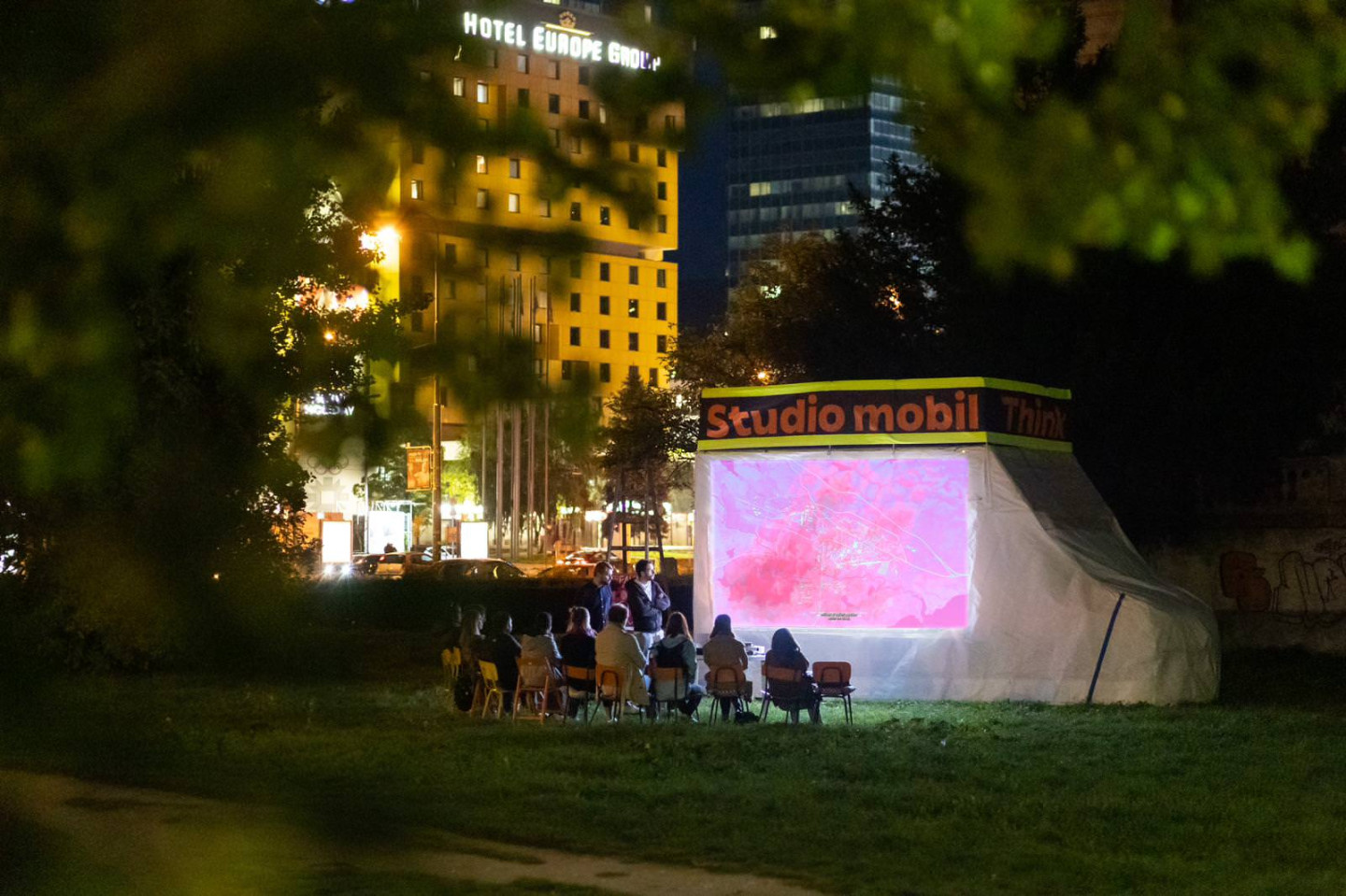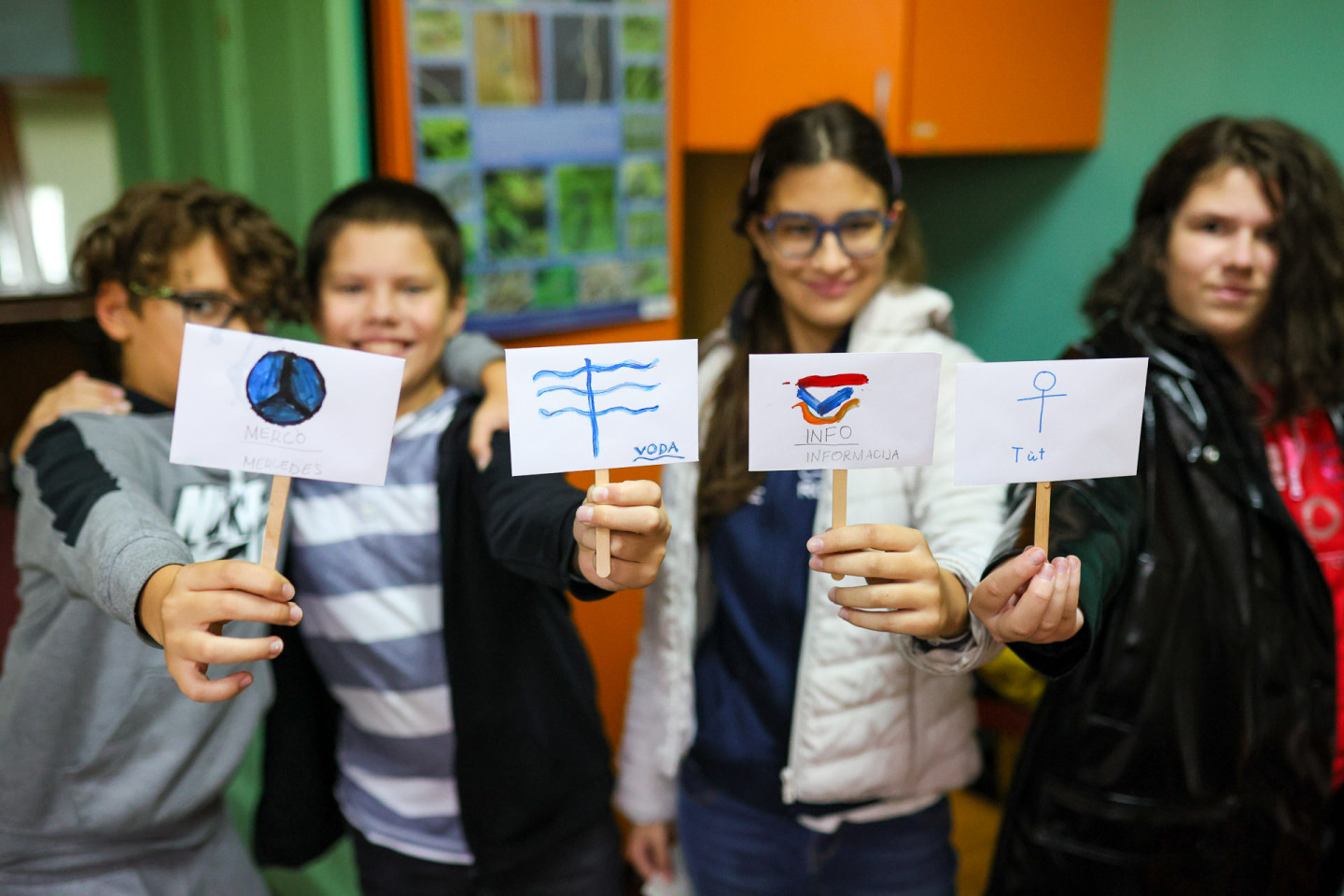The core of the project “False Clouds”, curated by Gabriela Manda Seith, consisted of the exhibition at the National Museum of Bosnia and Herzegovina where works of 20 artists and artist duos from twelve countries, including eight from Bosnia and Herzegovina were shown focusing on pollution of air, water and soil in Bosnia as well as globally through painting, photography, installation, video and objects.
Outcomes
A section showed documentation of artistic responses to environmental pollution in and outside Yugoslavia. Participants of all ages and from diverse origin visited the exhibition.
A week-long workshop was made with a school class, including 20 participants aged 10-12, by the artist Smirna Kulenovic and the curator Gabriela Manda Seith. At the end of the workshop the participants presented the resulting performance including their artworks made during the workshop to their parents in the Botanical Garden of the museum.
The events included film screenings, followed by panel discussions with filmmakers, scientists, researcher, activists, politicians and artists as well as a presentation by members of the Sarajevo Urban Transformation project and lecture performances by artists and researcher.
Through the artworks and films, the activities provided knowledge, showed new contexts, and created awareness on the issue of pollution. The project has brought together actors from different directions and backgrounds dealing with the issue. This has created new contacts and synergies for future projects. A production budget was made available for some artists so that they could produce new artworks that can be shown in further exhibitions.
The objectives laid during the project design could all be met except for the symposium, for which there were no sufficient financial resources and organizational capacities available.
Impact
The project created attention to the impact of pollution of air, soil and water on human, animal and plant health (SDG 3), the importance of keeping water clean and ensuring a balanced ecosystem (SDG 6, 14, 15) and addressed the links between climate change and pollution. It made it possible to produce eight new works of art on the theme of environmental pollution. Together with the other artworks, the exhibition encouraged visitors to rethink consumer behavior and to become more politically or activistically involved in environmental protection. This was conveyed through conversations. The children who participated in the workshop were particularly direct in their reactions that something needs to change as soon as possible so that we do not continue to put the earth in danger through human actions. They translated the discussions on the topic done in the exhibition and with support of Friedensreich Hunderwasser’s “Peace Treaty with Nature” into a theatrical performance.
There was a lot of media interest in the project. Four articles were published (and one more to be published), four television features were shown, and two radio announcements were made for the project.
Challenges and Learnings
The project reported that the collaboration with a wide variety of contributors worked well. It has been shown that it is important to unite different forces and to network in order to be able to move something against the background of the lack of political action and to create more social interest in the topic. At the same time, the coordination between so many partners and the organization of so many different formats was reported as very challenging.
Finally, the project reported difficulty to find a printing company that prints with sustainable materials. To save resources, fewer brochures, posters and postcards were printed than planned with the environmentally friendly options.
In addition to the fact that the exhibition is visually impressive, I think that the additional program of the "False Clouds" project offered visitors in Sarajevo and educational haven of events as an opportunity for a real discussion about the consequences of climate change and as a visual call to bring action in that. I see it as a perfectly organized visual project that could travel all around the world to raise awareness about the situation through art.
Armin Ćosić, 25, artist



